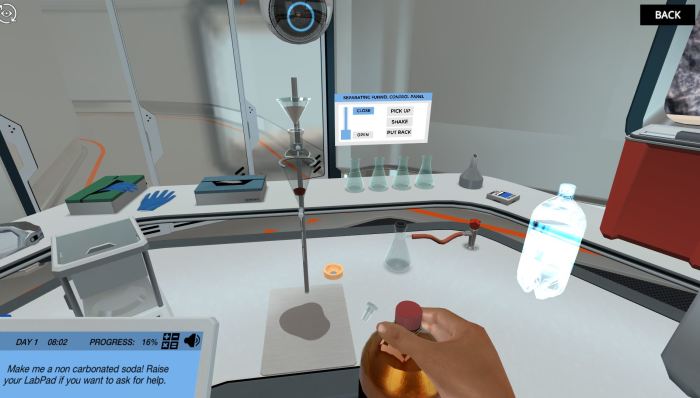5 Engaging Methods to Teach Liquid-Liquid Extraction to Get Students Excited

Liquid-liquid extraction is a widely used chemical separation technique rooted in the principle of differential solubility of a substance in two immiscible liquids. This separation method finds regular applications in food, beverage, pharmaceutical, chemical, petrochemical, cosmetics, and biomedical industries, among other fields.
To apply this method correctly, students must understand extraction theory and grasp what is happening at the molecular level. At the same time, it is important to practice this experimental technique thoroughly before putting it to use.
Covering these theoretical and experimental aspects through conventional teaching methods can often become tedious. Educators must, therefore, develop new, exciting methods to teach liquid-liquid extraction to keep students engaged with the subject matter. Here, we list five engaging methods to teach liquid-liquid extraction that will get students excited about learning this topic.
1. Engage Students with Interactive Models
Interactive models allow students to promptly respond to a study topic in real-time. This interaction can occur in the form of sensory perception, quick mental tests or even learning from one’s own mistakes.
Take Labster’s liquid-liquid extraction simulation, for example. In our virtual lab, students interact with and use a virtual separatory funnel to perform numerous chemical separation experiments. Moreover, they are free to make as many mistakes as they want when performing liquid-liquid extraction. Our simulation acknowledges that practice makes perfect, helping students learn from their practical mistakes in a safe and worry-free environment.

Discover Labster's liquid-liquid extraction virtual lab today!
2. Make the Topic Fun with Games and Activities
Games and activities take learning from the domain of a ‘task’ to that of a ‘hobby’. As a result, they make the subject matter more enjoyable and relatable for all students.
To teach liquid-liquid extraction to your students in a fun and engaging way, you can use some of the following games and activities:
· Bring in a separatory funnel to the classroom and allow your students to play with different combinations of safe fluids. For example, you can use water and vegetable oil.
· Demonstrate the liquid-liquid extraction of methylene blue from aqueous solutions using an appropriate organic solvent.
· Take your students to the lab and engage them in a timed competition to extract a food color from an aqueous solution using liquid-liquid extraction.
3. Accelerate Learning by Incorporating Technology
Technologies, like simulation, animation, and interactive virtual reality, can make even theoretical concepts seem tangible and practical. This is useful when teaching topics like liquid-liquid extraction, which require theoretical as well as experimental understanding of the subject.
For example, Labster’s liquid-liquid extraction simulation uses animation to teach how to extract caffeine from water by using dichloromethane. In our simulation, students use practice to learn the theory of extraction at both molecular and operational levels. This means that the students get to virtually use a separatory funnel for a variety of chemical separation projects!

4. Inspire Students Through Career Exploration
Telling students that their careers could benefit from pursuing a study topic can be a significant motivating factor to learn. Educators can do this by conducting an interactive career discussion in the classroom.
To inspire your students to learn liquid-liquid extraction, you can tell your students how:
· Chemical engineers use this technique to optimize extraction processes in pharmaceutical, petrochemical and food processing industries.
· Environmental scientists apply liquid-liquid extraction to separate pollutants from soil and water samples.
· Biotechnologists use the method to recover proteins and enzymes from biological materials.
5. Connect Topic to Its Real-World Applications
Knowing about the real-world applications of a topic in a textbook can completely transform the way students perceive that topic. It can help students to visualize the topic as having a tangible impact and to get inspired to learn it.
Connect liquid-liquid extraction to its real-world applications when teaching this topic. For example, discuss how liquid-liquid extraction helps in the isolation and concentration of medicinal compounds from plant extracts. Talk about the use of this method in the decaffeination of tea and coffee.
Final thoughts
Liquid-liquid extraction is one of the many methods of chemical separation that require an in-depth understanding of both theoretical and practical components before application. The creative methods we have discussed here will help you make liquid-liquid extraction an approachable and engaging topic for students.




-transformed.png)
